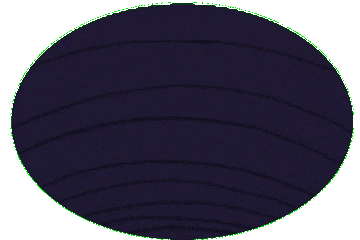Circus
A circus is a company of performers who put on diverse entertainment shows that may include clowns, acrobats, trained animals, trapeze acts, musicians, dancers, hoopers, tightrope walkers, jugglers, magicians, ventriloquists, and unicyclists as well as other object manipulation and stunt-oriented artists. The term "circus" also describes the field of performance, training, and community which has followed various formats through its 250-year modern history. Although not the inventor of the medium, Newcastle-under-Lyme born Philip Astley is credited as the father of the modern circus. In 1768, Astley, a skilled equestrian, began performing exhibitions of trick horse riding in an open field called Ha'penny Hatch on the south side of the Thames River, England. In 1770, he hired acrobats, tightrope walkers, jugglers, and a clown to fill in the pauses between the equestrian demonstrations and thus chanced on the format which was later named a "circus". Performances developed significantly over the next 50 years, with large-scale theatrical battle reenactments becoming a significant feature. The format in which a ringmaster introduces a variety of choreographed acts set to music, often termed "traditional" or "classical" circus, developed in the latter part of the nineteenth century and remained the dominant format until the 1970s. As styles of performance have developed since the time of Astley, so too have the types of venue where these circuses have performed. The earliest modern circuses were performed in open-air structures with limited covered seating. From the late eighteenth to late nineteenth century, custom-made circus buildings (often wooden) were built with various types of seating, a center ring, and sometimes a stage. The traditional large tents commonly known as "big tops" were introduced in the mid-nineteenth century as touring circuses superseded static venues. These tents eventually became the most common venue. Contemporary circus is performed in a variety of venues including tents, theatres, casinos, cruise ships, and open-air spaces. Many circus performances are still held in a ring, usually 13 m (43 ft) in diameter. This dimension was adopted by Astley in the late eighteenth century as the minimum diameter that enabled an acrobatic horse rider to stand upright on a cantering horse to perform their tricks. A shift in form has been credited with a revival of the circus tradition since the late 1970s, when a number of groups began to experiment with new circus formats and aesthetics, typically avoiding the use of animals to focus exclusively on human artistry. Circus companies and artistes within this movement, often termed "new circus" or "cirque nouveau", have tended to favor a theatrical approach, combining character-driven circus acts with original music in a broad variety of styles to convey complex themes or stories. Since the 1990s, a more avant-garde approach to presenting traditional circus techniques or "disciplines" in ways that align more closely to performance art, dance or visual arts has been given the name "contemporary circus". This labelling can cause confusion based upon the other use of the phrase contemporary circus to mean "circus of today". For this reason, some commentators have begun using the term "21st Century Circus" to encompass all the various styles available in the present day. 21st Century Circus continues to develop new variations on the circus tradition while absorbing new skills, techniques, and stylistic influences from other art forms and technological developments. For aesthetic or economic reasons, 21st Century Circus productions may often be staged in theaters rather than in large outdoor tents.
This article uses material from the Wikipedia article "Circus", which is released under the Creative Commons Attribution-Share-Alike License 3.0.
References
| Title | Summary | |
|---|---|---|
| The Flying Saucer Song | ... a chuckle or two. [2] [1] Circus , A. J. Morgan ... | |












